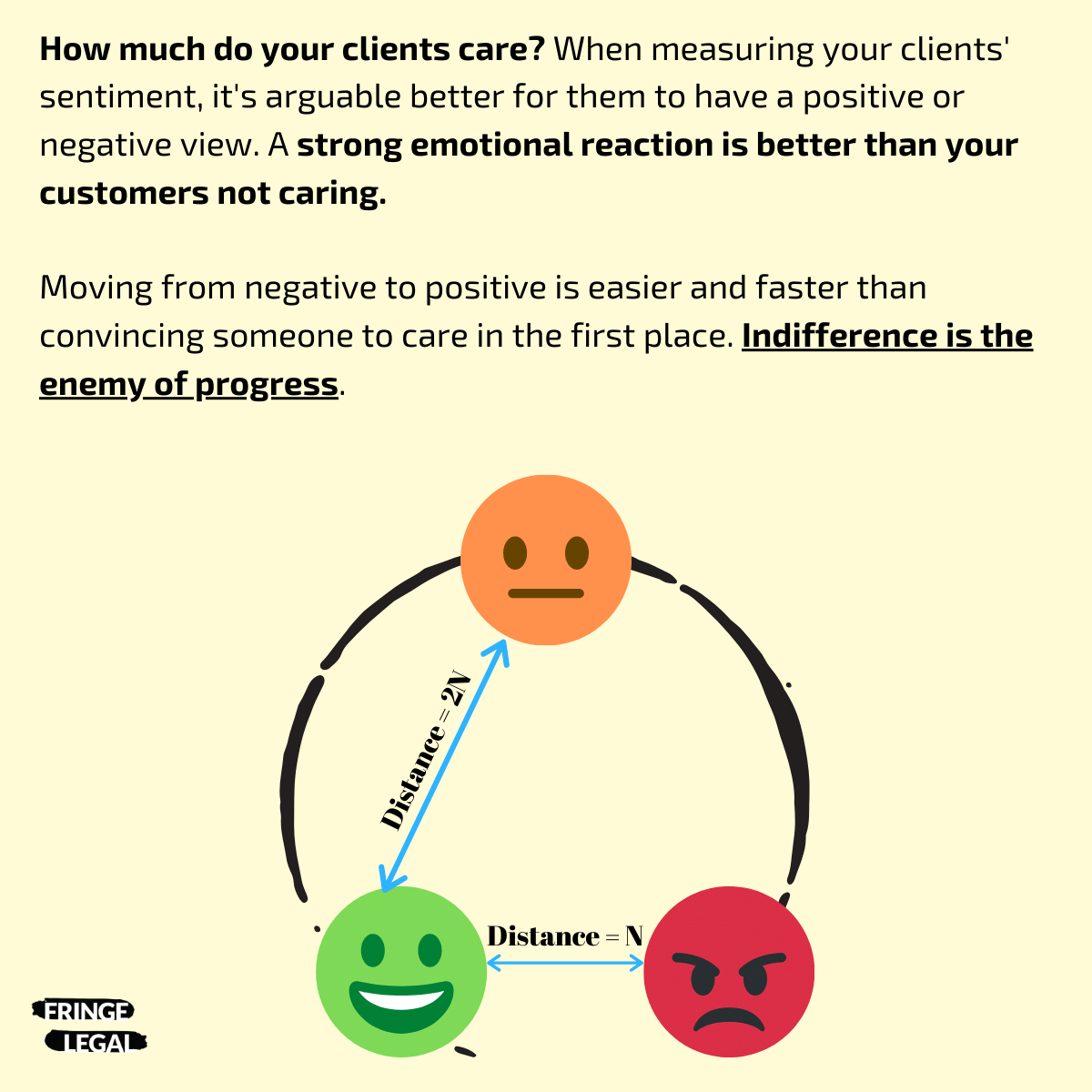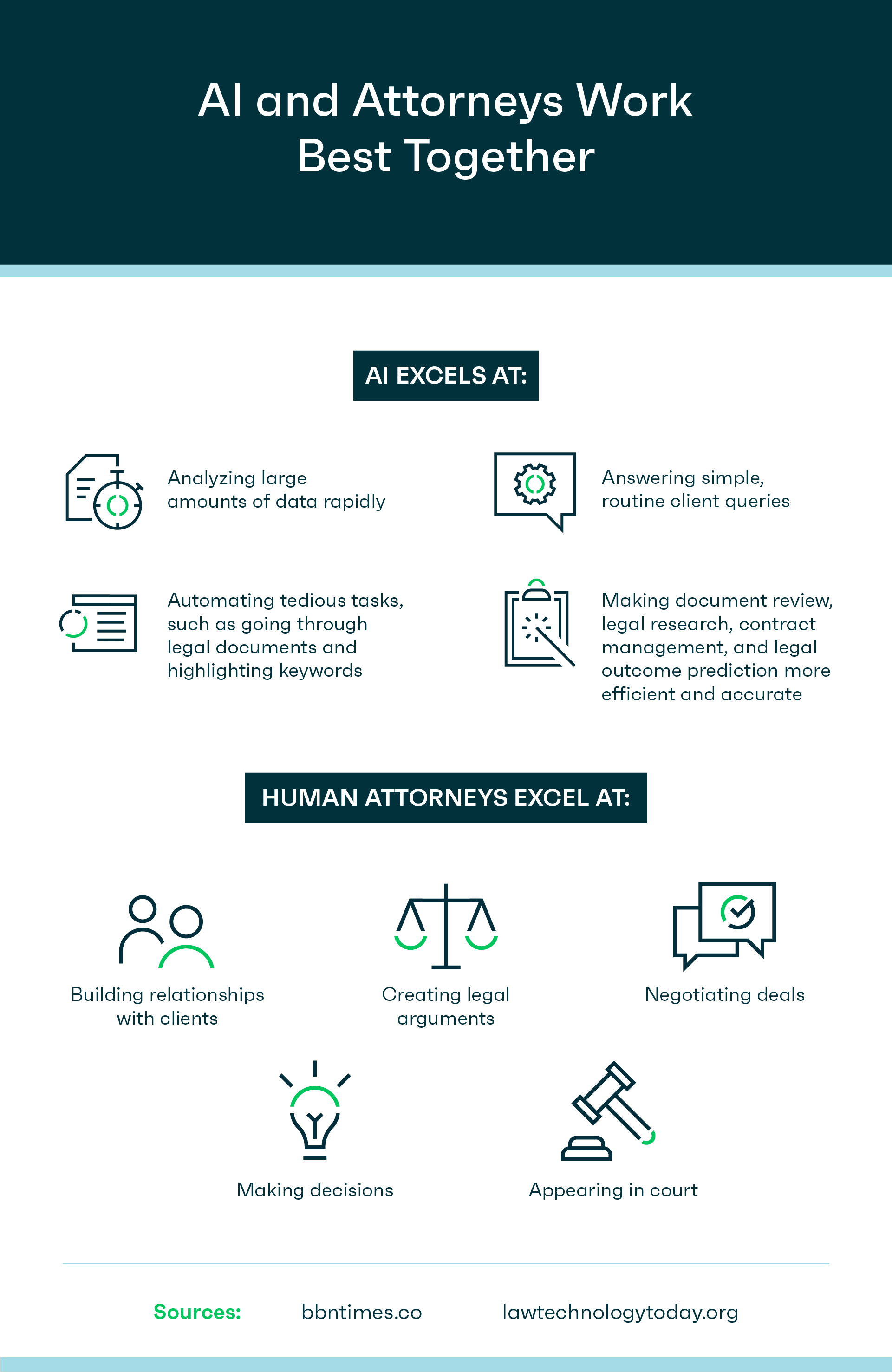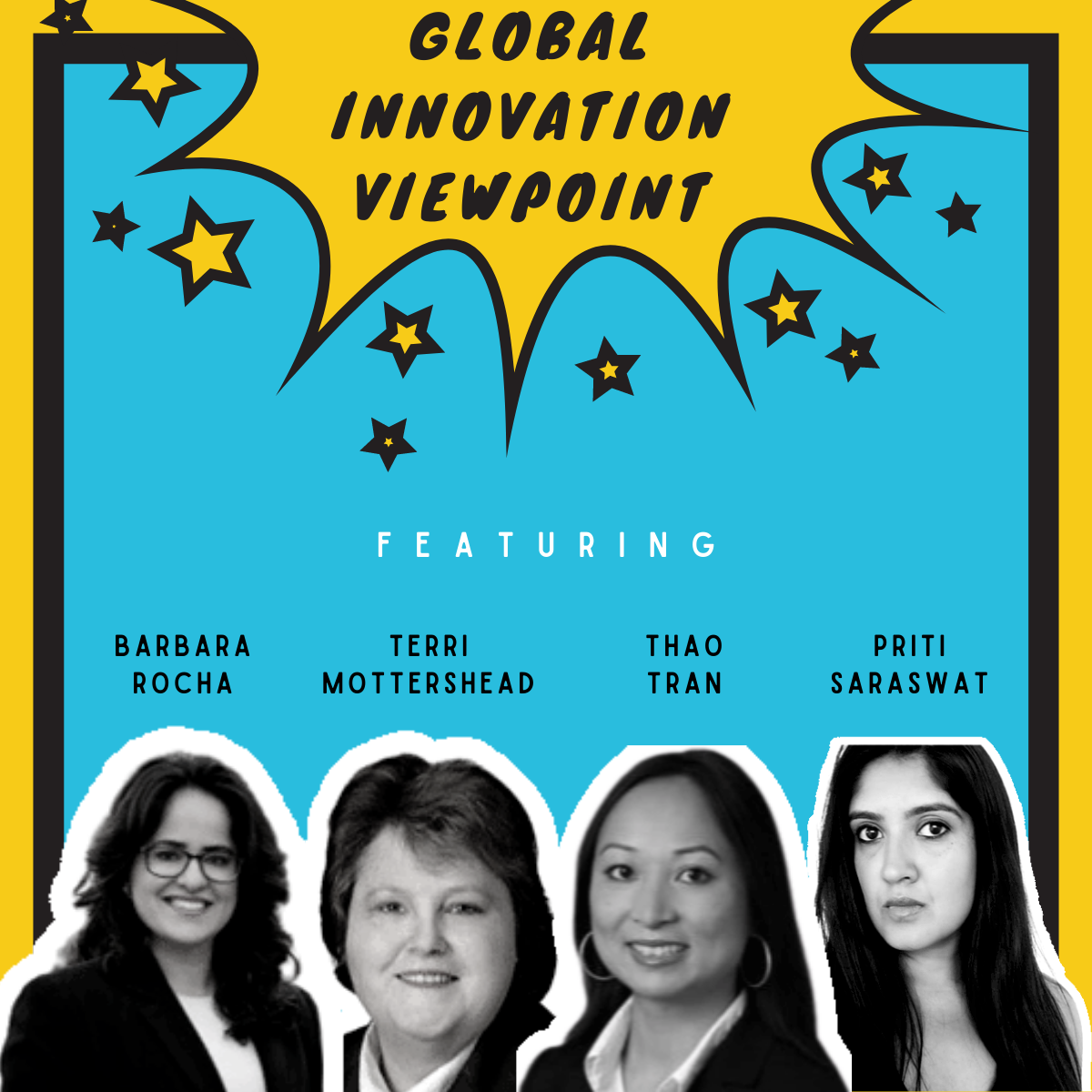Fringe Legal #0013 - do your clients care / people worried about AI / global innovation viewpoint
Aug 31, 2020 11:51 pm
It's been a crazy week, and I took a little break over the weekend to recharge, so excuse the delay in when this email hits your inbox. In this issue, there are three interesting things + a couple of items I've been pondering.
I had some wonderful conversations this week, and many of them revolved around adoption and growth. What rings true in almost every instance is that having someone care (even if they disagree) is much better than no reaction (indifference).
When measuring sentiment - positive and negative emotions are often represented along a straight line, making them seem like two sides of an extreme. That isn't necessarily true. If one feels strongly about a subject/problem/solution - the fact they care is a great place to be.
Indifference is the enemy of progress - it is an emotional disconnect. Here, to urge a reaction, you need to help them understand that there is a problem to be solved, then what you're proposing is worth it, and only then could the work begin.
When I speak about lawtech, part of the reason I love hearing, "we've tried that before, and it didn't work". It means that they acknowledge that there is a problem, they even attempted to solve it, and we need to find a better solution (or have a different approach).
Map the sentiment on a circle (see diagram), and you'll see that moving an individual this is indifferent requires at least 2x the work, than somewhere who cares. Do your clients care?
P.S. I've also started focusing a few hours each week on deepening my understanding of A.I. My approach here is to go to the fundamentals: learn about the general principles, issues (e.g., bias), things to be figured out (e.g., ethical considerations), and then create a relevance map to legal. I know many of you are experts here, and if you have any resource recommendations, please let me know.
As a reminder, I'm speaking with Pat Gillette on Friday, 4th Sep at 10am California / 6pm London. Take part to listen and ask questions.
READ
As I started pulling back the curtain on A.I., two topics keep repeating: (1) what can A.I. do; and, (2) will some branch of A.I. replace lawyers?
When it comes to getting work done in the legal field, research is definitely required. Legal professionals generally have to find case law that supports or is in contradiction to their supposed desires. It's undisputed that leveraging artificial intelligence can help with tasks such as this, which require lots of time, that isn't just about search and find. However, the broader use of artificial intelligence also means that people in the legal profession are justifiably worried about whether or not machine learning will replace them.
While some tasks are appropriate for A.I., many are not. For example, machine learning cannot replace things such as assigning a value to a legal case. Where else is artificial intelligence not a substitute for law? This graphic gives a good overview:
LISTEN
I posted a replay of this session from the Fringe Legal summit, where I had the privilege to speak with four amazing women leaders on their views on innovation and some of the projects that had sprouted amidst the pandemic.
There's a lot of relevance still, and it's a good measuring stick to how much (or little) things may have changed since May when this session was initially recorded.
Listen to the Global Innovation Viewpoint (75 minutes)
WATCH
On Aug 28th Elon Musk held a live broadcast to share the progress of Neuralink. He gave an update to the device, some results so far, and what they hope to do in the future.
The device is the size of a "large coin", and has some skinny wires coming from one side. It is designed to be implanted in the skull, with the wires embedded a few millimeters into the brain's surface. The wires can detect the firing of neurons.
They showed the results as part of the 'three little piggies' demo. Of the three pigs, Gertrude had the implant in place, which could detect neurons firing whenever there was interaction with her snout. Initially, the company will focus on restoring movement for paralyzed individuals, and later on bigger goals (restoring vision, recording memory, and telepathy!).
Wondering how this relates to legal, listen to my conversation with Dr. Allan McCay to find out.
CNET has a good (short) video explaining the Neuralink demo.
Watch the explainer video (6m)
Stay well.
Ab
Help us grow: If you know anyone who will enjoy this, please forward this email, or ask them to sign up.




